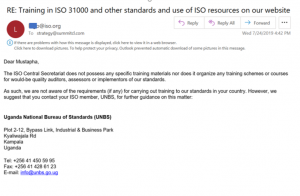Five years ago, while coaching senior managers at a pension fund in Uganda, we launched an ambitious transformation program. The board had approved it. The funds were ready. Staff were motivated. We were roaring to go. Then… nothing. Three months in, the energy fizzled out. Staff went back to old routines. Managers defaulted to firefighting. The momentum died. Everyone blamed “resistance to change.” But that was a lie. The truth was uglier.
I diagnosed the problem. Deeply. It is not superficial, like how most consultants send you generic reports after Googling your sector. No. I met the staff. I observed meetings. I reviewed internal memos. Like a surgeon, I dissected the leadership culture. And I found it: Three bad habits of leadership were choking momentum. Not systems. Not structures. Not salaries. The leaders themselves were the bottleneck.
a) Obsession with control disguised as accountability
The director in charge of operations insisted that all decisions, even simple ones, had to pass through him. “I just want to be sure we are aligned,” he said. Nonsense. That was control. Not alignment. Because of him, the approval for a new digital onboarding tool took seven weeks. Meanwhile, customers continued queuing at the branch. Frontline staff were frustrated. Innovation died. Momentum collapsed.
Accountability means empowering teams with clear targets and letting them execute. Control is about insecurity. True leadership is about setting direction, not micromanaging every detail. When leaders confuse these, they create bottlenecks that slowly kill every spark of innovation.
b) Shifting priorities every quarter
The CEO, visionary, had a new “strategic imperative” every three months. Staff joked that they’d wait two weeks before taking anything seriously, because it might change. First, it was digital-first. Then customer intimacy. Then product diversification. When everything is a priority, nothing is. Teams lost confidence in planning. Execution suffered. It wasn’t fatigue. It was leadership inconsistency.
Momentum needs rhythm. Great leaders create drumbeats: weekly huddles, monthly reviews, quarterly sprints. They commit to execution with discipline. You don’t change the destination because the weather is rough. You change the route. Not the goal.
c) Pretending to listen but not acting
During our strategic townhalls, staff raised genuine issues like broken backend systems or outdated KPIs. Managers nodded. Took notes. Promised action. Then did nothing. By the third meeting, the staff stopped speaking. What’s the point? Once leadership signals that feedback is performative, not actionable, engagement dies. So does momentum.

“Your job as a leader is not just to direct the ship. It’s to accelerate it. Momentum requires clarity, trust, rhythm, and responsiveness”

In the village where I grew up in Kikuube, elders taught us that “when you call a meeting and do nothing, people stop attending. When people stop attending, you have no community.” That lesson applies to your organization. Momentum is community. Kill trust, you kill progress.
Leadership challenge this week
Do an audit of your habits. Where are you over-controlling? Where have you shifted priorities without proper execution? Where have you gathered feedback and failed to act?
Call a meeting with your senior team. Share this article. Ask them: “Where do I kill momentum?” Then shut up and listen. Don’t defend. Don’t justify. Listen. Write it down. Fix it.
The Momentum Radar
Use the Momentum Radar to track your leadership energy across these 5 areas:
- Decision speed
- Team autonomy
- Strategic consistency
- Feedback-to-action rate
- Meeting value score
Score each out of 10 weekly. Track it. Discuss it. Improve it. Because what gets measured gets moved.
The momentum radar score

Momentum is not magic. It is engineered. And most times, it’s leaders who destroy it—one bad habit at a time.
The above illustrative example means:
- Decision speed – Score: 7/10
This suggests your leadership team is making decisions fairly quickly. You’re not paralyzed by bureaucracy. However, a 7 also indicates room for tightening the loop, especially for cross-functional decisions or escalations. You may need to clarify decision rights or streamline your escalation matrix.
Leadership move. Delegate more. Empower frontline teams with thresholds. Limit meetings for minor decisions.
- Team autonomy – Score: 6/10
Your teams are moderately independent, but many still wait for approvals. This kills initiative. Autonomy is the backbone of momentum. When team members must “seek permission” for everything, you create a bottleneck culture.
Leadership move. Redesign roles with clearer boundaries. Set OKRs and let teams run. Reward initiative, not obedience.
- Strategic consistency. Score: 4/10
This is a red flag. It means you’re changing priorities too often or delivering mixed messages. Maybe your townhalls say one thing and your budget allocations say another. Teams are confused. Execution is suffering.
Leadership move. Lock strategy for 12 months. Align messaging. Align KPIs. Review quarterly but resist the urge to “pivot” too fast.
- Feedback-to-action rate – Score: 5/10
You’re listening. But not acting fast enough. Staff may be losing faith in feedback channels. They’re watching what you do, not what you say.
Leadership move. Create a feedback log with clear action owners. Publish a “you said—we did” dashboard. Build credibility.
- Meeting value score – Score: 6/10
Your meetings are decent, but possibly too frequent or lack outcomes. People may show up physically but are disengaged mentally. Meetings must be momentum accelerators, not momentum killers.
Leadership move. Cut meeting time by 30%. Clarify purpose. Start with wins. End with commitments. No minutes, no meeting.
What It All Means
This radar tells me your team is functional but not flying. You’ve built a solid base, but you are leaving velocity on the table. Your job as a leader is not just to direct the ship. It’s to accelerate it. Momentum requires clarity, trust, rhythm, and responsiveness.
A radar score below 6 in any area signals either your team is confused, constrained, or just waiting for you to act.
What will you fix this week?





